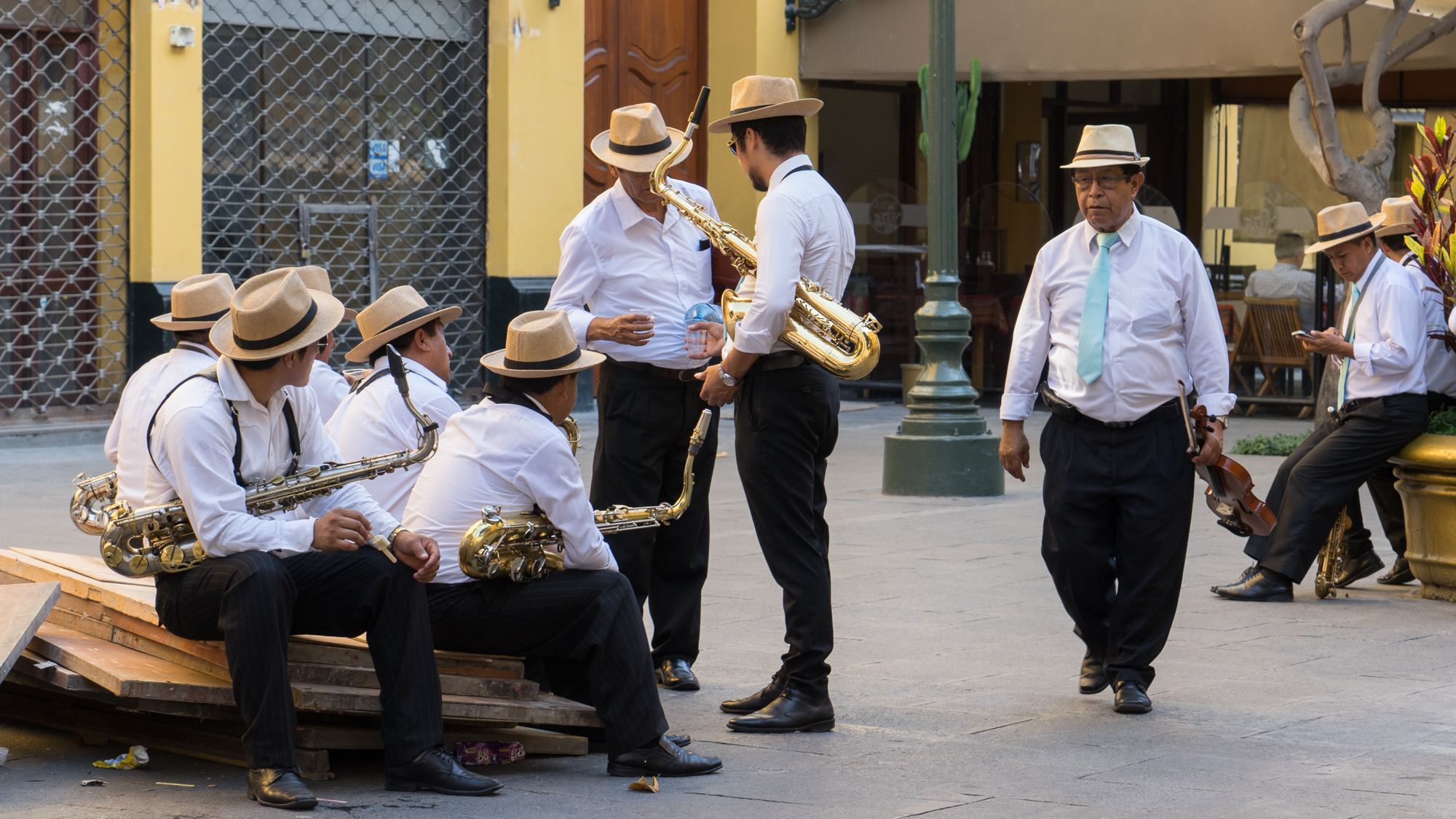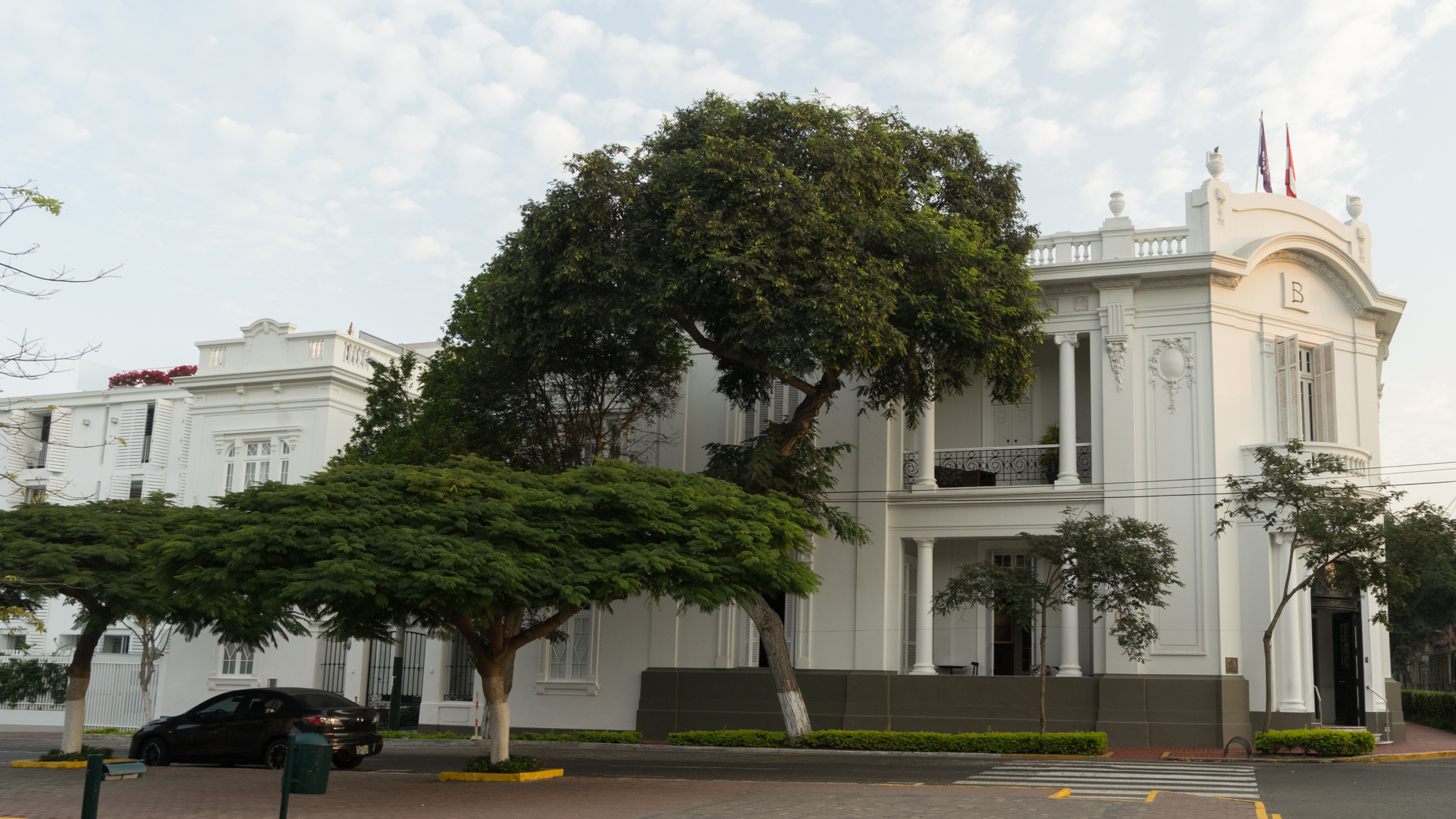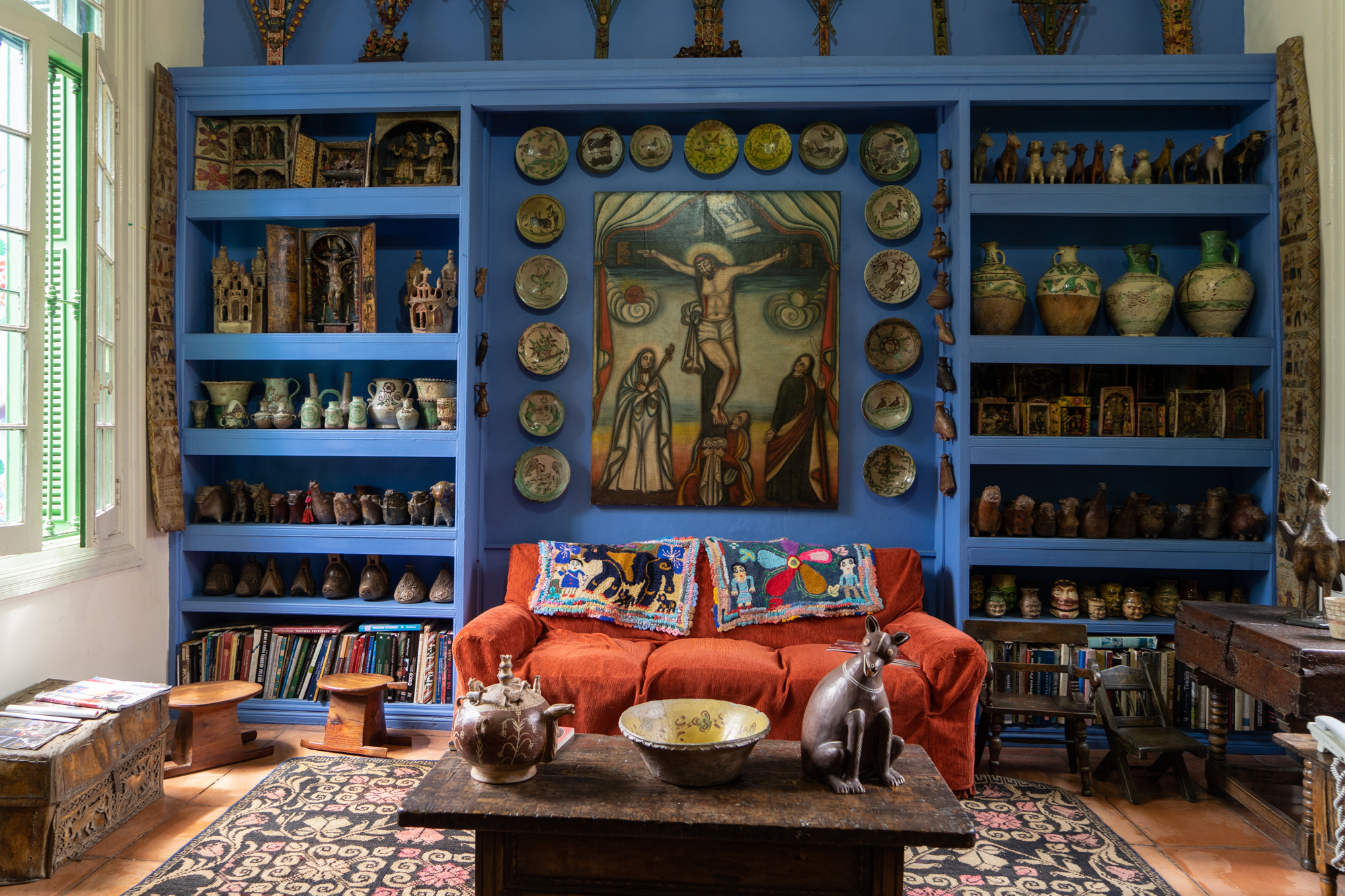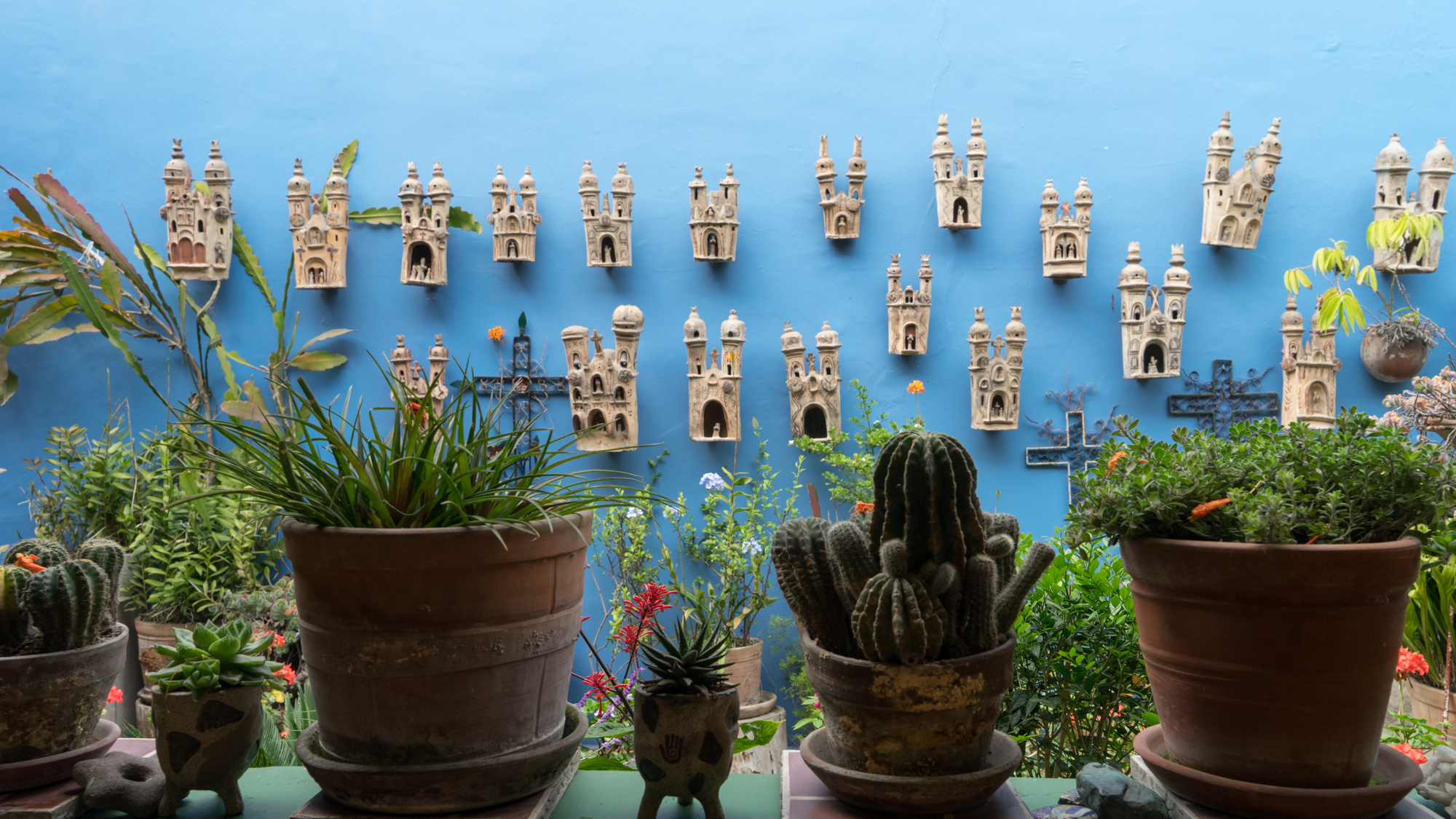After an active week spent exploring Cusco and the Sacred Valley our group arrived in Lima in the late afternoon and headed to what we heard was the city’s chicest place to stay --the Hotel B. As soon as we pulled up it was evident that this was indeed a hot hotel. A lively, stylish and sophisticated crowd enjoying cocktails spilled out of the restaurants' large windows and onto the porch overlooking the tree-lined street. The coastal capital of Peru was a sharp contrast to colonial Cusco and our days hiking at Explora, and we were ready to join in with a Pisco Sour and a few days soaking in the food, culture, art, and history of Peru’s great capital city.
Tripper Tips:
We flew overnight from New York to Lima where we immediately caught a flight to Cusco. Upon arrival, we drove the approximately 1-½ hours to the Sacred Valley, staying at the Explora Valle Sagrado, our home base for the next three nights. We did a one-day excursion from Explora to Machu Picchu, but I regret not spending at least one night at the sanctuary. After two nights spent in Cusco, we flew to Lima. There we joined a trip organized by the World Monuments Fund to see some of the WMF watch sights in the city before flying to the colonial city of Trujillo, visiting Huaca de la Luna and Chankillo, one of the earliest astronomical observatories in the Americas. To read about our time in the Sacred Valley click here and to view our essential guide to Cusco click here.Stay: Set in Lima’s hip neighborhood of Barranco, the Hotel B is an art-focused boutique hotel with 17 suites housed in a Belle Epoque mansion, a perfect mix of old and new Lima. No two rooms are alike; all decorated with unique art pieces and set up around various inner living rooms and photography-lined hallways. It feels like you’re staying at a friend's fabulous home, rather than a hotel. Just a block from the coast the location is ideal for a morning jog. There is a lovely breakfast spread in the library each morning with creative egg dishes made to order and a small outdoor courtyard to dine in. We heard the restaurant is a good choice for dinner, but with so many excellent options nearby why not venture out-- no matter how tempting it is to stay put.
Alternate Stay: On our return from Trujillo we had two more days in Lima but just one night as our flight to the States left at 11 pm. As the Hotel B was sold out, we checked into the Belmond Miraflores, an oceanfront high rise on the edge of the cliffs, long considered Lima’s top property. In affluent, seaside Miraflores, The Belmond is a more business orientated hotel but it has a lovely setting on the water with peak sunset views and is just a five-minute walk from the Larcomar shopping center, a scenic outdoor mall overlooking the ocean home to some of Peru's best shops such as Kuna and Ilaria —great for one stop shopping. Other perks include a small rooftop pool and an extensive breakfast buffet. For those who prefer a full-service hotel, the Belmond is a perfect option, though we preferred the intimacy and style of the Hotel B.
Favorite Half Day: Allow some time to explore the bohemian neighborhood of Barranco, by far our favorite area in Lima. Originally settled by European immigrants in the 18th century, it’s now home to artists, photographers, and musicians. Barranco is a neighborhood in the midst of renewal filled with eclectic boutiques, coffee houses, and small museums. Palm trees line the streets, and the houses are pastel colored. Many are elegant 19th-century colonial mansions --some beautifully restored, and others waiting for some love. Right down the road from the Hotel B is Dedalo, a fantastic concept store divided into small rooms with individual vendors selling everything from jewelry to clothes to home décor accessories. There’s also a lovely outdoor café for a snack or coffee. Afterward, head over to Cajamarca Street and be sure to stop by Las Pellas, a unique artisan store with amazing textiles, jewelry, and handmade new and old Peruvian crafts curated by Welsh-born Mari Solari, an expert in Peruvian folk art. The shop doubles as Solari’s home for over 30 years, well before Cajamarca was a trendy shopping street. We were lucky as she showed us some of her private collection and her garden—all quite extraordinary. Other must-visit shops include Garua, Cajamarca 219, and El Cacaotal for chocolate. A highlight of our afternoon was a stop at MATE, founded by fashion photographer Mario Testino whose aim in opening this small museum was to bring Peruvian artists to the world’s attention. The majority of MATE’s exhibition spaces are devoted to Testino’s photographs, including a room showcasing his stunning works of the late Princess Diana. Mate has a great gift store, be sure to allow some time to shop! Barranco is also home to the Museum of Contemporary Art. You must have lunch at Isolina, a stylish tavern known for its interpretation of cocina criolla, Peru’s traditional and hearty cuisine. Here we had our best Lomo Saltado of the trip, and trust us we sampled a lot over our two weeks in the country. While there are a few vegetarian options this is a meat-centric place. After lunch, make your way to the central plaza, where one must make a wish and walk across the small wooden La Puente del Los Suspiros, the Bridge of Sighs. Legend has it that if you hold your breath for the length of the bridge, your wish will come true.
Best Lunch: Everyone from the person we sat next to on the plane to our tour guide to the hotel concierge insisted that El Mercado from Peru’s celebrity chef Rafael Osterling was a must. From delicious hot and cold ceviches to tiraditos to duck tacos and shrimp curry this was a fantastic meal, served in a chic buzzy, beachy room. We love restaurants where the vibe matches the food, and Mercado delivers. Don’t skip the churros for dessert served with both chocolate and dulce de leche. Other good mid-day choices include La Mar Cebicheria, from Gaston Acurio ’s, another of Peru’s superstar chefs and upscale Cala with an ideal beachfront locale with wonderful water views.
Dinner: Lima has a red-hot food scene with some of the world’s top restaurants, and we had some fantastic meals. We booked Central from chef Virgilio Martinez Veliz way in advance to savor a taste of Peru via their multi-course fixed menu. Every course uses local ingredients, each marked by the altitudes (elevations) of their origin with names such as Red Rocks and High Jungle. While we are usually fans of more casual dinners from the inventiveness and presentation to the delicious fare, this is an experience of the senses. Note: Central has recently relocated from Miraflores to more spacious digs in Barranco. If you’re traveling to the Sacred Valley be sure to check out his new venture Mil, read all about it here. Another night we ate at Malabar, known for chef Pedro Miguel Schiaffino’s experimentation with Amazonian ingredients. The food was delicious, and we all loved our meal, though the restaurant is quiet in an elegant way. If you’re looking for more of a scene, you may prefer Malabar’s more casual sister restaurant Amaz, known for its lively bar, an ideal spot to sample Peru’s national cocktail, the pisco sour. Our last night before heading to the airport we ate outside on the striking patio of the Huaca Pucllana restaurant, overlooking the 1, 5000- year –old archeological ruins that were once the center of Lima’s indigenous civilization. Dinner with front row views of the pre-Inca pyramid, illuminated at night, was a dramatic setting, though the food paled in comparison to our other meals in Lima. Other top tables we wanted to try were Maido for elevated Peruvian Japanese fusion, Astrid y Gaston, Amoramar and every local’s favorite Rafael, one of the city’s most beloved restaurants.
Museums: Museo de Arte Lima, called MALI, houses the most extensive collection of Peruvian art in the country chronicling 3, 000 years of art in Peru, before the arrival of the Europeans in the 21st century. The Amano Museum has a renowned collection of Colombian textiles and ceramics assembled by Yoshitaro Amano who built the collection after many years living and working in Peru. The Larco Museum was a favorite of many in our WMF group of travelers, a privately owned museum of Pre-Columbian art, housed in a beautiful 18th-century mansion. Don’t miss the gallery of pre-Colombian 'erotic' pottery and if you have time stay for lunch. The museum’s café is set in a lush private garden.
Sight See: The Plaza de Armas (also known as Plaza Mayor) in the historic center is the heart of the city, and a must-see for first-time visitors. Its main attractions include the Government Palace, the Cathedral, the Archbishops Palace, the Municipal Place and the large, tiered bronze fountain, the centerpiece of the plaza. The time to be here is at noon for the changing of the guard at the National Place. The square is the site of celebrations, festivals and concerts and we were lucky to arrive as parades of local dance troupes in full costume were circling the plaza, a real treat! Right off the Plaza Mayor, we visited Casa de Aliaga, a private home that was built by Conquistador Jeronimo de Aliaga, who acquired the land from none other than Francisco Pizarro. The house dates back to 1535 and remarkably has been continually habituated by Jeronimo’s descendants for 17 generations. We were honored to meet the current owner Don Gonzalo de Aliaga who showed us around the grand house, a gem of Peruvian art and architecture. You must book a tour in advance and hire a local guide—to do so click here.
Don’t Miss: One block from Lima's Plaza Mayor, the Convento de San Francisco has impressive architecture and a collection of antique texts, but its claim to fame is its underground catacombs with a macabre grouping of some 70,000 bones and skulls arranged into geometric patterns—creepy and compelling.
Food Market: We went one morning to the local Surquillo Mercado #1 considered one of the best markets for food in the city. Fruits and vegetables are king here; buy some of the more unusual fruits such as lucuma, camu camu or cherimoya to try back in your hotel room. Peru grows more than 3,000 types of potatoes, and we saw varieties here we had never seen before. The rest of the market is made up of stalls of spices, chilies, seafood, meat, and herbs. If you’re hungry, you can stop and have a ceviche. The market is small, so you don't need much time, but it’s definitely a worthy stop.

















